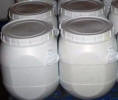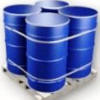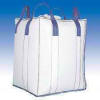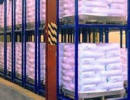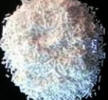| Anmol Chemicals is the pioneer manufacturers of Potassium sorbate & Potassium ascorbate, Pharmaceutical Excipients Food & Flavor chemicals in India. We offer Halal and Kosher Potassium sorbate & Potassium ascorbate made in an ISO9001, ISO22000 (FSSC22000) cGMP and GLP certified facility. Our group has several manufacturing facilities spread across the world, supported by toll manufacturers and representatives in UAE, Europe, USA, China and has several associated manufacturing facilities spread across India. All the Information on Physics, Chemistry, Applications, Uses and Technology on Manufacture of Potassium sorbate is in these pages. |
| The units have one or more of the certifications like FDA GMP, ISO 9001, ISO 22000, HACCP, REACH, Kosher & Halal |
Potassium Sorbate USP BP FCC Food Grade & Potassium Ascorbate Manufacturers
Potassium Sorbate CAS Number 24634-61-5, EINECS EC Number 246-376-1, HS Code ---**; Molecular Weight 150.2, Molecular Formula: C6H7KO2
Potassium Ascorbate: CAS Number: 15421-15-5, EINECS EC Number: 239-432-1, Molecular Formula: C6H7KO6, Molecular Weight: 214.21
SDS GHS MSDS Sheet of Potassium Sorbate Manufacturers
SDS GHS MSDS Sheet of Potassium Ascorbate Manufacturers
Arabic سوربات البوتاسيوم أسكوربات البوتاسيوم
Spanish Sorbato de potasio Ascorbato de potasio
Portuguese Sorbato de potássio Ascorbato de potássio
French Sorbate de potassium Ascorbate de potassium
Dutch Kaliumsorbaat Kaliumascorbaat
German Kaliumsorbat Kaliumascorbat
Italian Sorbato di potassio Ascorbato di potassio
Potassium Sorbate USP
2,4-Hexadienoic acid, (E,E)-, potassium salt; 2,4-Hexadienoic acid, potassium salt.
Potassium (E,E)-sorbate; Potassium sorbate.
Potassium Sorbate contains not less than 98.0 percent and not more than 101.0 percent of C6H7KO2, calculated on the dried basis.
Identification:
A: Dissolve 1 g in 10 mL of water: the solution responds to the test for Potassium.
B: Dissolve 0.2 g in 2 mL of water, and add a few drops of bromine TS: the color is discharged.
Acidity or alkalinity: Dissolve 1.1 g in 20 mL of water, and add phenolphthalein TS. If the solution is colorless, titrate with 0.10 N sodium hydroxide to a pink
color that persists for 15 seconds: not more than 1.1 mL is required. If the solution is pink in color, titrate with 0.10 N hydrochloric acid: not more than 0.80 mL is
required to discharge the pink color.
Loss on drying: Dry it at 105C for 3 hours: it loses not more than 1.0% of its weight.
Heavy metals: 0.001%.
Assay: Dissolve about 300 mg of Potassium Sorbate, accurately weighed, in 40 mL of glacial acetic acid, warming, if necessary, to effect solution. Cool to
room temperature, add 1 drop of crystal violet TS, and titrate with 0.1 N perchloric acid VS to a blue-green endpoint. Perform a blank determination, and make any
necessary correction. Each mL of 0.1 N perchloric acid is equivalent to 15.02 mg of C6H7KO2.
Potassium Sorbate BP Ph Eur Grade Specifications
DEFINITION
Potassium (E,E)-hexa-2,4-dienoate.
Content
99.0 per cent to 101.0 per cent (dried substance).
CHARACTERS
Appearance: White or almost white powder or granules.
Solubility: Very soluble in water, slightly soluble in ethanol (96 per cent).
IDENTIFICATION
First identification: B, D.
Second identification: A, C, D.
A. Ultraviolet and visible absorption spectrophotometry.
Test solution: Dissolve 50.0 mg in water R and dilute to 250.0 ml with the same solvent.
Dilute 2.0 ml of this solution to 200.0 ml with 0.1 M hydrochloric acid.
Spectral range: 230-350 nm.
Absorption maximum: At 264 nm.
Specific absorbance at the absorption maximum: 1650 to 1900.
B. Infrared absorption spectrophotometry.
Comparison potassium sorbate CRS.
C. Dissolve 1.0 g in 50 ml of water R, add 10 ml of dilute hydrochloric acid R and shake.
Filter the crystalline precipitate, wash with water R and dry in vacuum over sulphuric acid R for 4 h. The residue obtained melts at 132C to 136C.
D. Dissolve 0.2 g in 2 ml of water R and add 2 ml of dilute acetic acid R. Filter. The solution gives reaction (b) of potassium.
TESTS
Solution S: Dissolve 2.5 g in carbon dioxide-free water R and dilute to 50 ml with the same solvent.
Appearance of solution: Solution S is clear and not more intensely coloured than reference solution.
Acidity or alkalinity: To 20 ml of solution S add 0.1 ml of phenolphthalein solution R. Not more than 0.25 ml of 0.1M sodium hydroxide or 0.1 M hydrochloric
acid is required to change the colour of the indicator.
Aldehydes: Maximum 0.15 per cent, expressed as C2H4O.
Dissolve 1.0 g in a mixture of 30 ml of water R and 50 ml of 2-propanol R, adjust to pH 4 with 1 M hydrochloric acid and dilute to 100 ml with water R. To 10 ml of the
solution add 1 ml of decolorised fuchsin solution R and allow to stand for 30 min. Any colour in the solution is not more intense than that in a standard prepared at
the same time by adding 1 ml of decolorised fuchsin solution R to a mixture of 1.5 ml of acetaldehyde standard solution (100 ppm C2H4O) R, 4 ml of 2-propanol R and
4.5 ml of water R.
Heavy metals: Maximum 10 ppm.
2.0 g complies with test D. Prepare the reference solution using 2 ml of lead standard solution (10 ppm Pb) R.
Loss on drying: Maximum 1.0 per cent, determined on 1.000 g by drying in an oven at 105 °C for 3 h.
ASSAY
Dissolve 0.120 g in 20 ml of anhydrous acetic acid R. Titrate with 0.1 M perchloric acid using 0.1 ml of crystal violet solution R as indicator until the colour changes
from violet to bluish-green. 1 ml of 0.1 M perchloric acid is equivalent to 15.02 mg of C6H7KO2.
Potassium Sorbate FCC Food Grade
DESCRIPTION
Potassium Sorbate occurs as white to off white crystals, crystalline powder,
or pellets. It decomposes at about 270C.
Function: Antimicrobial agent; preservative.
REQUIREMENTS
Identification:
A. A 1:10 aqueous solution responds to the flame test for Potassium.
B. Add a few drops of bromine TS to 2 mL of a 1:10 solution. The color
disappears.
Assay: Not less than 98.0% and not more than 101.0% of C6H7KO2,
calculated on the dried basis.
Acidity (as sorbic acid): Passes test (about 1%).
Alkalinity (as K2CO3): Passes test (about 1%).
Lead: Not more than 2 mg/kg.
Loss on Drying: Not more than 1.0%.
TESTS
Assay: Dissolve about 250 mg of sample, accurately weighed, in 40 mL of glacial acetic acid contained in a 250-mL glass-stoppered Erlenmeyer flask, warming if
necessary to effect solution. Cool to room temperature, add 2 drops of crystal violet TS, and titrate with 0.1 N perchloric acid in glacial acetic acid to a blue-green
endpoint that persists for at least 30 s. Caution: Handle perchloric acid in an appropriate fume hood.
Perform a blank determination and make any necessary correction. Each milliliter of 0.1 N perchloric acid is equivalent to 15.02 mg of C6H7KO2.
Acidity (as sorbic acid): Dissolve 1.1 g of sample in 20 mL of water, and add 3 drops of phenolphthalein TS. If the solution is colorless, titrate with 0.1 N
sodium hydroxide to a pink color that persists for 15 s. Not more than 1.1 mL is required.
Alkalinity (as K2CO3): Dissolve 1.1 g of sample in 20 mL of water, and add 3 drops of phenolphthalein TS. If the solution is pink, titrate with 0.1 N hydrochloric
acid. Not more than 0.8 mL is required to discharge the pink color.
Lead: Determine as directed in the Flame Atomic Absorption Spectrophotometric using a 10-g sample.
Loss on Drying: Determine as directed under Loss on Drying, drying a sample at 105 for 3 h.
Specifications of Potassium Ascorbate:
Appearance: Off white to yellow powder
Water content: 15% maximum.
Arsenic: 1 ppm maximum.
Cadmium: 1 ppm maximum.
Mercury: 1 ppm maximum.
Lead: 5 ppm maximum.
Assay as - Potassium: 14.8% - 16.4%
Assay as - Ascorbic acid on anhydrous basis: 60% minimum
Assay as - Potassium Ascorbate (C6 H7O6 K. 2H2O): 95% to 105%
Total plate count: Not more than 3000 cfu/ g.
Yeast & mould: Not more than 100 cfu/g.
E. coli: To be absent.
Salmonella: To be absent.
Potasssium Sorbate Manufacturers:
Anmol Chemicals
S-8, SARIFA MANSION, 2ND FLANK ROAD, CHINCHBUNDER, MUMBAI 400009, INDIA
TEL: (OFFICE) 91-22-23770100, 23726950, 23774610, 23723564. FAX: 91-22-23728264
e-mail: anmolc@mtnl.net.in
Exports to USA, Canada, UAE, Dubai, South Africa, Tanzania, Kenya, Nigeria, Egypt, Uganda, Turkey, Mexico, Brazil, Chile, Argentina, Europe Netherlands, Italy, Spain, Germany, Portugal, France, Malaysia, Indonesia, Thailand, Vietnam, Korea, Japan, etc.
Copyright and Usual Disclaimer is Applicable. 4 February, 2022
